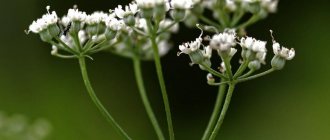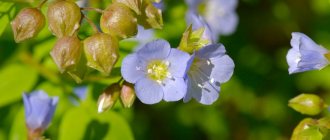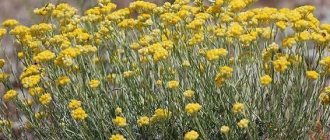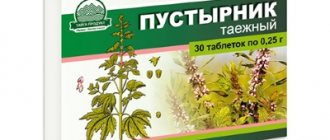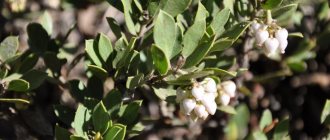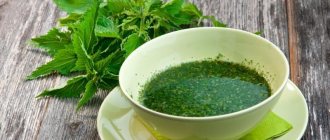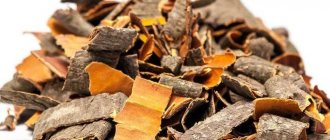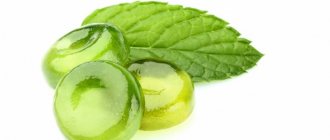Verbena officinalis is a perennial herbaceous plant. Belongs to the verbena genus (Verbena) of the verbena family (Verbenaceae). In official medicine, the plant is considered poisonous , but in folk medicine this property is not mentioned.
Verbena officinalis was deeply revered in ancient Greece and Rome. This can be judged even by the names with which it was called: “Tears of Isis”, “Blood of Mercury”, “Grass of Hercules”. It was used to crown priests during sacrifices. The Druids were familiar with her.
The plant mainly gained its popularity as having occult and magical properties. The beneficial and medicinal properties of verbena were especially widely appreciated in the Middle Ages, when almost all diseases were treated with its help. It was believed that it protected against any infection, which made it a valuable remedy during the epidemics that raged in those days.
Although the benefits of verbena officinalis are recognized in official medicine, it is currently almost not used, since more effective pharmaceutical preparations have been obtained.
Verbena officinalis has been used in folk medicine for the treatment of blood vessels, respiratory organs, liver, spleen, diseases of the female genital area, in dermatology, etc. It has a hematopoietic and restorative effect.
Verbena officinalis is used as a raw material to obtain essential oil, the aroma of which is reminiscent of camphor, which also has medicinal properties. In addition, the substance citral, used in medical practice, is obtained from verbena essential oil.
The plant is also used in cooking. It is used as a seasoning for pickling and salting vegetables. Verbena officinalis herb, collected during flowering, is drunk as a tea substitute.
Types and varieties
The verbena genus is quite numerous and, in addition to verbena officinalis, includes 100 species, including:
- Buenos Aires verbena – Verbena bonariensis L.;
- California verbena – Verbena californica Moldenke;
- spear verbena (blue) – Verbena hastata L.;
- Verbena intermedia Gillies & Hook.;
- Kuhlmann's verbena – Verbena kuhlmannii Moldenke;
- Lindbergh's verbena – Verbena lindbergii Moldenke;
- coastal verbena – Verbena litoralis Kunth;
- valerian verbena – Verbena valerianoides Kunth and others.
Among such a wide variety of species, only one species, verbena officinalis, is used as a medicinal plant.
Subspecies
Verbena officinalis is divided into several varieties and subspecies:
- Verbena officinalis var. africana (R.Fern. & Verdc.) Munir; Verbena officinalis subsp. africana R.Fern. & Verdc.;
Also, some sources refer to Verbena halei as a species of verbena.
Verbena officinalis. Latin name : Verbena officinalis L.
Verbena officinalis. Other names : iron ore, iron ore, red zirka, dry nephrosh, witchcraft plant, holy grass, tears of Juno.
Growing on site
The soil for growing Verbena officinalis should be well permeable and not very heavy, and the place should be sunny.
Reproduction
Verbena officinalis L.
Seeds are sown in late autumn before winter or early spring. The seeding depth is about 1 cm, the distance between rows is 50-60 cm. Plant care consists of watering and loosening. They tolerate replanting well, so they can be “moved around the site” not only in the spring.
Advice. In the Non-Black Earth zone, Verbena officinalis often die in winter, but they begin to regenerate from fallen seeds. Therefore, if this happens, then do not rush to dig up the area, wait for the verbena shoots to appear and transplant them to the chosen place. Verbena can be placed in a mixborder or in a separate group. The germination of seeds does not last long, so it is better not to store them for a long time. Plants recover well after cutting raw materials, so they are decorative almost the entire season.
Botanical description
Verbena officinalis is a herbaceous perennial with a powerful root. Height: 30-70, up to 100 cm.
- The stem of verbena officinalis is vertical, tetrahedral, covered with short appressed hairs along the edges. It branches in the upper part.
- The leaves are opposite, sessile, rough-hairy on both sides. They are located on short, wide petioles.
The middle leaves of verbena officinalis are tripartite, with large, unevenly crenate-incised lobes, the teeth are blunt, of which the middle one is larger than the lateral ones. The upper ones are incised crenate, ovoid, oblong. The apical ones are entire.
The taste of the leaves is tart.
- Verbena officinalis flowers are small. The bracts are acute, lanceolate or ovate, shorter than the calyx. The calyx has short sharp teeth and is covered with sparse waxes. The corolla is five-lobed; cylindrical tube; the upper three lobes are larger, almost twice as long as the calyx. Color: lavender, purple.
Collected in the upper part at the ends of the branching stems into large, long multi-flowered sparse inflorescences-spikes.
There is no smell of officinalis verbena.
- The fruit of verbena officinalis is an oblong-linear, dihedral-convex, wrinkled, shiny nut. Color: brown, brown.
- Blooms in June-August. The fruits ripen in August-September.
general characteristics
Verbena belongs to the family of simple and unpretentious herbaceous plants of the same name. These can be small shrubs, a thick flowering carpet, or even tall, straight subshrubs up to several meters tall.
Verbena flowers are always small, up to a maximum of 2.5 cm, but at the same time they are collected in dense inflorescences and brushes. The color spectrum is wide and varied: from white and yellow to pink, dark red and even blue or dark blue.
Some varieties of verbena are actively used in medicine for the treatment and prevention of digestive problems. In cooking, it is often used for flavor in the preparation of preserves and preparations. Medicinal verbena is also in demand among beekeepers and honey lovers.
Photo: domashniecvety.ru
Habitat
Verbena officinalis is widely distributed in temperate and tropical climates around the world. It can be found in North and Central America, Australia, Africa, Europe and Asia. In the CIS countries - this is the south of the European part, Ukraine, the Caucasus, the Urals.
Where does verbena officinalis grow? Although the plant is quite unpretentious and widespread, its supplies are limited. Grows in forests and forest edges, meadows, hills, along the banks of reservoirs (streams, rivers, seas), gorges, and ravines. As a weed, verbena can be found on the ruins of old houses, waste places, wastelands, along the edges of fields and among crops, near roads, fences, as well as in gardens and orchards.
Legends, myths, beliefs
There are a huge number of legends and beliefs about this magical flower. Verbena also exhibits beneficial properties in non-traditional uses.
Since ancient times, our ancestors knew what kind of herb verbena was and believed that it would relieve many troubles and evil and help reveal the gift of clairvoyance. For protection, they created amulets, amulet, or simply dried the plant in bags and then hung it on a thread.
It is also relevant in magic:
- by planting near the house, the owner attracts prosperity to it;
- fortune tellers believe that the smell of verbena is similar to some aphrodisiac aromas;
- a vervain amulet around the neck protects against the evil eye;
- and for sorcerers it helps to deprive an opponent of the gift of clairvoyance.
An ordinary herb, as it may seem at first glance, but it is considered sacred. And this is really true: it will protect you and improve your health. What kind of plant is verbena? This is a real amulet and talisman, and, in addition, a beautiful and colorful flower.
Collection and preparation
For medicinal purposes, the entire aerial part is harvested, less often only the leaves of verbena officinalis. Collection is carried out during flowering, in dry, sunny weather, not too early, after the dew has dried.
Dry outdoors in the shade, under a canopy or indoors with good air ventilation, spreading it in a thin layer, remembering to turn it over periodically.
Finished dried raw materials of verbena officinalis are stored in bags and boxes made of natural materials in a dry, well-ventilated area. Shelf life – 2 years.
Reproduction methods
Seeds
The seed propagation method is suitable even for the most inexperienced gardener. March is considered the optimal time for planting. In winter, the germination process occurs slowly, but as soon as spring arrives, the plants come to life faster. You will be able to see the first shoots in 2 weeks.
Just before planting, verbena seeds should be soaked in a biostimulant in advance. It allows the plant to grow and develop faster. Place planting material evenly in a prepared container filled with a damp substrate. Cover the container with glass and film to create a greenhouse effect.
REFERENCE! The container with seeds should be in a dark room where the temperature is 25 degrees. If the specified temperature has been observed, then after 3 days the first sprouts will hatch.
After their formation, place the container with seedlings in a cooler climate.
Irrigation is carried out by spraying. Excessive soil moisture is unacceptable. When planting seeds in separate cups, picking is not required. If you grow seedlings in large containers, then as soon as the first leaf is formed, you will have to pick.
After transplanting young plants into separate containers, you need to wait 2 weeks so that they can take root. After this, nitrogen-containing fertilizers can be applied. In tall plants, to form a lush bush, you need to pinch the top at the initial stages of development.
The seedlings should be transplanted into open ground in early June. Just pre-harden it before doing this. To do this, take the seedlings outside, increasing the time of such a “walk” every day. When planting, maintain a distance of 20-30 cm between plants.
Cuttings
Performed in the spring. To do this, you need to use the upper shoots. Cut them off as carefully as possible, leaving a cutting with 4 pairs of leaves. The lower part of the cutting should be cleared of foliage and buried in the ground.
For planting verbena, as a beautiful herbaceous plant for open ground, a substrate consisting of sand and peat is best suited. Until the root system of the cuttings is completely formed, keep them under a transparent film.
Find out more about growing verbena from seeds and propagating by cuttings here.
Similar species
When purchasing and preparing verbena officinalis, you should pay special attention to the fact that the name “verbena” is present not only in plants (species) from the genus Verbena. In the verbena family (Verbenaceae), to which verbena officinalis belongs, it is:
- lemon verbena – Aloysia citrodora;
- Nashia inaguensis,
- Phyla alba;
- fake verbena – Glandularia;
- bush verbena –
Plants belonging to other families are also called “verbena”, these are:
- sweet Verbena-tree – Backhousia citriodora;
- abronia (Sand-verbenas) –
In addition, “verbena” is referred to in their names
- Cordia verbenacea;
- verbena sage – Salvia verbenaca;
- Verbesina,
which also belong to other families.
All of the listed plants are separate species, not related to each other or to Verbena officinalis. Each of them has its own personal beneficial and medicinal properties.
To purchase verbena officinalis, you should be guided by its Latin name, and when collecting it, first carefully study the description of the plant and photo.
Pest diseases
Powdery mildew is the most common disease to which flowers are susceptible. The disease manifests itself in the form of a white coating, which begins to affect the lower leaves, then moves to the upper ones. Then the bush begins to turn yellow, dries and withers. The fight comes down to treatment with drugs: Fitosporin, Skor, Topaz.
Root rot also leads to rapid death of the plant. Due to excessive moisture, the roots and stem darken and rot. To save the plant, it is necessary to remove it from the ground, clean it of damage and replant it in prepared soil. The plant will first need to be treated with the following preparations: Discor, Raek, Fitolavin.
Aphid. The appearance of a scattering of small bugs can be seen on young upper shoots and flowers. During their life, the aphid sucks the juice from the plant, which leads to rapid death. In the fight against aphids, the drugs “Aktara” and “Fufanon-Nova” have proven themselves to be excellent.
Whitefly. Signs of the appearance of whiteflies are: a sticky coating on the stem of the plant, curling of the leaves and the presence of larvae on the inside of them. If treatment is ignored, the plant becomes covered with a white coating, darkens and dies. The following drugs will help in the fight against whitefly: Tepeki, Masai.
Medicinal and beneficial properties of verbena officinalis
The properties of verbena officinalis are as follows:
- vasodilator,
- antispasmodic,
- cardiotonic,
- appetizing,
- laxative,
- antipyretic,
- antifever,
- expectorant
- diaphoretic,
- diuretic,
- choleretic,
- sedative (calming),
- antitumor,
- antiseptic,
- anti-inflammatory,
- antiallergic,
- painkiller,
- wound healing,
- absorbable,
- lactogenic,
- blood purifying,
- hematopoietic,
- antiscorbutic,
- restorative,
- tonic.
Chemical composition
Active ingredients of verbena officinalis:
- iridoids, simply put, bitters (aucuban, loganin, verbenaline, gastatoside);
- a large number of flavonoids (apigenin, scutellarein, luteolin);
- phenolic acid derivatives (verbascoside);
- alkaloids (adenosine);
- citral;
- ursolic acid;
- caffeic acid;
- beta-carotene;
- tannins;
- saponins;
- minerals, macro- and microelements (potassium, phosphorus, calcium, magnesium, zinc);
- essential oils.
The use of verbena officinalis in folk medicine
A large number of people, freely using plants to treat various diseases, believe that they are absolutely harmless. However, among medicinal plants there are potent, toxic and even poisonous ones. In addition, many people, especially older people, have several chronic diseases.
Therefore, in order for the treatment to be effective, when using it, one should take into account the beneficial and medicinal properties of verbena officinalis and the contraindications that it has, and this can only be done by a doctor. Based on this, before you start taking verbena officinalis preparations, consult a doctor, or better yet, a herbalist you trust. The information given below is for informational purposes only.
Diseases of the heart and blood vessels
As a medicine, verbena officinalis has proven itself well for the treatment of diseases of the heart and blood vessels. Has cardiotonic properties. A course of internal administration of an infusion of leaves is recommended for hypotension, atherosclerosis, and thrombosis.
Externally, verbena is used in the form of lotions for tumors of the lymph nodes and thrombophlebitis.
For the head
The plant has a vasodilator, antispasmodic effect, so verbena officinalis is useful for dizziness, lethargy, and headaches, especially those arising from poor digestion.
Colds and bronchopulmonary diseases
The beneficial and medicinal properties of verbena are used for respiratory diseases. As a diaphoretic, antipyretic, antifever, anti-inflammatory, analgesic, infusion of leaves is taken for acute respiratory diseases, laryngitis, tracheitis, bronchitis, pneumonia, fever, etc.
To enhance the diaphoretic effect, add honey or raspberry jam to the verbena infusion. The juice of the plant, with honey, dissolved in warm water, improves breathing.
Externally, the plant is used to gargle for various inflammatory processes.
Gastrointestinal diseases
The medicinal properties of verbena officinalis and its use are effective for the treatment of certain diseases of the gastrointestinal tract, as well as for prevention purposes. Plant preparations increase appetite, increase the secretion of gastric juice, and normalize digestion. Based on this, a course of verbena is carried out for gastritis with low acidity, various disorders of the gastrointestinal tract, etc.
For the liver
As an organ improver and as a choleretic agent, verbena officinalis is of great benefit for diseases of the liver and gallbladder, such as hepatitis, including chronic hepatitis, cholecystitis, cholelithiasis, etc. For liver inflammation, use essential oil internally.
For these diseases, verbena officinalis is taken both independently and in herbal teas.
For the spleen
The beneficial and medicinal properties of verbena officinalis in the form of an infusion of leaves have found application in diseases of the spleen.
Oncological diseases
Positive results have been obtained from the use of verbena officinalis preparations in oncology. In Chinese, Korean and Tibetan medicine, the plant is recommended for tumors of the genital organs.
For women
Treatment with verbena officinalis has proven itself well for diseases of the female genital area. An infusion of leaves is used for scanty, short menstruation, especially in women of asthenic physique. Internal intake of essential oil is also acceptable for these purposes.
The plant promotes uterine contraction, so in India, verbena is used as a contraceptive.
The properties of verbena officinalis will benefit nursing women: to increase lactation, you should drink an infusion of the leaves.
For men
As a folk remedy, verbena officinalis is also useful for men's health. The juice of the plant is prescribed as an effective remedy for impotence.
Oral diseases
The beneficial properties of verbena officinalis and its use is effective for the treatment of diseases of the oral cavity. The plant has anti-inflammatory and analgesic properties; therefore, an infusion of leaves is used for rinsing in various inflammatory processes. It will also help with bad breath.
For toothache, it is better to treat it comprehensively. To do this, rinse and at the same time take the infusion orally.
Joint diseases
As a medicine, verbena officinalis is taken orally for rheumatism.
Skin diseases
Verbena officinalis is a medicinal plant that is widely used for skin diseases. Considering the blood-purifying, antiallergic, antiseptic, anti-inflammatory, analgesic, wound-healing effects, internal course administration of plant preparations is recommended for various allergic diseases (eczema, neurodermatitis, etc.), psoriasis, lichen planus, vasculitis, scrofula, scrofula, scabies, furunculosis , boils, fistulas, rashes, etc. Verbena officinalis root preparations also help well with scrofula.
To achieve a faster and longer-lasting result, at the same time, externally washes, lotions, baths, baths are made using verbena decoction.
Wounds, ulcers, burns
The medicinal properties of verbena officinalis are used for various damage to the skin, such as ulcers, including trophic ones, wounds, including difficult to heal, abrasions, etc.
For these purposes, a decoction of the leaves is used for rinsing and lotions. Also, good results, especially with bruises and hematomas, are given by pads made from fresh leaves crushed by hand, followed by securing with gauze or bandage. Alternatively, the leaves are placed in a colander and soaked in hot water for about a minute before being used as a poultice.
In folk medicine, verbena officinalis is used for rabies (hyperphobia). To do this, drink a decoction of verbena stems in wine.
In cosmetology
Treatment of dermatological diseases with verbena gives good results. A course of internal administration of the infusion is prescribed in the presence of acne and baldness. Externally, a decoction of verbena officinalis is used for washing and lotions.
For the whole body
The medicinal properties and use of verbena officinalis are recommended for healing and strengthening the body as a whole. Leaf preparations have general strengthening, tonic properties and normalize metabolism. They have great benefits for the circulatory system: they act as a blood purifier, improve blood composition, and promote hematopoiesis. The leaves have a high content of vitamin C (up to 100 mg%), which makes them an antiscorbutic agent.
Based on this, a course of taking verbena officinalis is carried out in case of metabolic disorders, anemia, general weakness, loss of strength, lethargy, exhaustion, vitamin deficiency, scurvy.
Also for these purposes, taking verbena essential oil is acceptable.
Contraindications
The beneficial properties of verbena herb do not exclude the presence of contraindications. In most cases, herbal medicine does not have any harmful effects on the body. But in some situations it is better to avoid using verbena. Contraindications include:
- thrombocytopenia;
- age under 14 years;
- low stomach acidity;
- allergic reaction;
- stomach ulcer;
- pregnancy.
A serious reason for refusing herbal medicine is the development of an allergic reaction. Under unfavorable circumstances, it can lead to impaired respiratory function as a result of swelling of the mucous membrane. In this case, you need to use an antihistamine and consult a doctor.
Traditional medicine recipes
Chronic hepatitis
Make a collection of the following medicinal plants, taken equally (by weight):
- verbena officinalis (herb),
- common agrimony (herb),
- white jasmine (grass),
- common horehound (herb),
- arnica montana (flowers),
- medicinal marigolds (flowers),
- cumin (fruit),
- buckthorn laxative (bark),
- birch warty (leaves).
1 tbsp. collection pour 250 ml. boiling water Cover with a lid, wrap and leave until warm. Strain, squeeze out the raw materials.
Take half a glass three times a day before meals. The course of treatment is up to 5 months.
Cirrhosis of the liver
Make a collection of the following medicinal plants, taken in equal quantities (by weight):
- verbena officinalis (herb),
- common agrimony (herb),
- St. John's wort (herb),
- horsetail (herb),
- birch warty (leaves).
- tansy (flowers),
- common yarrow (inflorescences),
- cinnamon rosehip (fruit),
- snake knotweed (rhizomes),
- creeping wheatgrass (root).
2 tbsp. collection, pour 400 ml into a thermos. boiling water Leave for 3 hours. Strain, squeeze out the raw materials.
Take 100-125 ml. three times a day before meals. The course of treatment is up to 5 months.
Amenorrhea and hypomenorrhea
Make a collection of the following medicinal plants, taken equally (by weight):
- verbena officinalis (herb),
- knotweed (grass),
- oregano (herb),
- common yarrow (inflorescences),
- common horehound (herb),
- St. John's wort (herb),
- elecampane (rhizomes),
- Schisandra chinensis (fruit),
- cinnamon rosehip (fruit),
- Icelandic moss.
8 gr. collection pour 400 ml. hot boiled water. Place the container in a water bath and simmer over low heat for 20 minutes. Remove from heat, cover with a lid, insulate and leave for 1 hour. Strain, squeeze out the raw materials. Bring the resulting decoction to its original volume using boiled water.
Take half a glass three times a day before meals. The course of treatment is up to 4 months.
Collection for external use
Make a collection of the following medicinal plants, taken by weight:
- verbena officinalis (herb) – 10 g;
- chamomile (flowers) – 5 gr.;
- rose (petals) – 10 gr.;
- summer oak (bark) – 10 gr.;
- Salvia officinalis (leaf) – 5 gr.;
- horsetail (grass) – 10 gr.
Pour 1 liter of all herbs. boiling water Cover the container with a lid, wrap it up and leave until warm. Strain, squeeze out the raw materials.
Used as an anti-inflammatory and wound-healing agent for rinsing and lotions for various skin diseases and damage to the skin.
Why is this dietary supplement so good?
It contains a whole complex of medicinal plants, among which the leader is verbena officinalis, which actively fights hematopoietic disorders. This is an excellent remedy for the prevention of atherosclerosis, varicose veins, thrombophlebitis, venous insufficiency, vascular fragility, anemia, and increased blood clotting.
- Helps cleanse and strengthen blood vessels.
- Stimulates vascular walls, ensures stability of peripheral blood flow.
- Improves the condition of blood vessels, promotes their elasticity.
- Reduces the risk of blood clots.
- Normalizes metabolic processes.
- The gotu kola herb extract, which is part of the dietary supplement, helps increase blood flow and saturate the body with oxygen.
- Rosehip extract, which is part of the dietary supplement, gently cleanses the blood of toxins and waste.
- Ginkgo biloba extract, which is part of the dietary supplement, normalizes peripheral blood supply.
You may also be interested in:
290 rubles Spirulina - Fitosila ® dietary supplement, No. 120 table.
x 0.35 g (blister) 141 rubles Spirulina - Fitosila ® dietary supplement, No. 60 table. x 0.35 g (blister)
528 rubles Spirulina - FITOSILA ® dietary supplement, No. 240 table. x 0.35 g (JAR)
273 rubles Badger fat enriched 120 caps. x 0.3 g - dietary supplement, "Sustamed" ®, "FITOSILA"
248 rubles Enriched bear fat 120 caps. x 0.3 g - dietary supplement, "Sustamed" ® (EAC), "FITOSILA"
